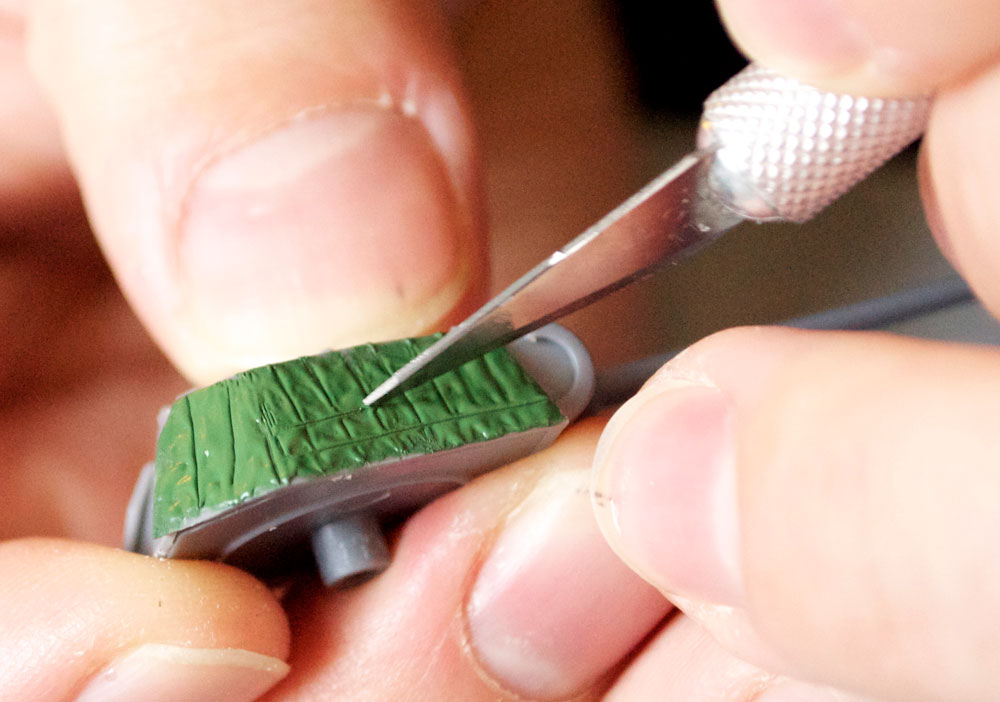One major difference between the Battlefront Panthers and the PSC Panthers as far as detail is the mesh grille on the engine vents. While I think the PSC ones would be beneficial for wrecks, and allow greater modification, the fact of the matter is that a running Panther would have had a mesh layer on top of any of its vents. Most egregious in this regard is the crew heater modification, which is hollow in the PSC model, lacking any of its critical internal geometry.
To rectify this, I set about making my own grille covers. At this size, any actual mesh weave wouldn't have been fine enough to fill it, so I decided to use greenstuff, and a stamp.
You will need, essentially, three different types of stamp. For the boxed one, I cut plasticard. For the round ones, I discovered to my glee that one section of an Ork Bomma gun was good for both diameter of vents!
To actually make them, I first dragged them along one of my files not across the teeth but along them, to groove the surface. This was deepened and lined with a craft knife in a proper cross formation, so I could get an appropriate mesh look.
Whenever I use greenstuff I tend to work from the 'safest' to 'least safe' part of the model, as far as later damaging the work I've done while it's still malleable. In this case, the crew heater gets a ball of putty that mostly fills, and is a bit higher than the space it needs to go in.
Lining up the grid to be parallel to the tank, I push it in just until the greenstuff starts to extrude. Careful to keep the punch a bit wet so the greenstuff doesn't stick to it.
Next, while the round tool is still at hand, I did the other circular vent. In this case, I used a sculpting tool to lay on as thin an amount of greenstuff as would fill the space. I nudged it into all the cracks and flattened it as much as possible.
To ensure the smoothness and shape, I lick my finger and rub the top. After this, the process is much the same as with the first.
Likewise, the square vents are managed with the tool first.
Flatten this section with the tool, squaring it off. At this stage I try to remove any excess that doesn't fit the rectangle.
This one is an easier one to line up, and I press firmly, rocking back and forth, to ensure a good grid shape manifests.
After all four vents are applied (or in this case, two for the sake of images) I use a craft knife to cut the edges away while it's still wet. For both the round vent and the box ones, cut off anything that would overlap into the joins.
To easier save the putty, while removing it I keep a small ball in my hand which I can use to pull it off the blade, keeping the blade clean for future cuts.
And here's one I prepared earlier! This was one of the first I tried it on: my company commander. You can see that the ridges pick up enough that with painting they should be distinctive.
Similarly, you can see that I have done a similar stamping with the flame hoods on the exhausts. Luckily, I had plastic rod of an appropriate diameter, which I grooved like the vents, and then drilled a small hole in for the nub.
Next time, I promise, stowage. I am adding a ladder or two, and will shortly be using liquid greenstuff to make sure it doesn't fall apart!










































